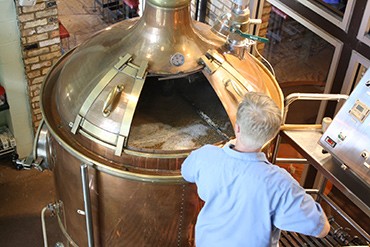About beer and epatage

Linguists say that a living language is constantly changing. For better or for worse, that is another question, but it is definitely changing. In Russian, this often happens simply by replacing words with foreign ones. Whether it’s good or not, it’s not for me to judge, but in recent years a new word has been added: Craft. Unlike the new-fangled “Fresh” and “Print,” Craft has become a surprisingly organic part of the language not only in Russia, but also in other countries. Perhaps this is because the word is mainly associated with beer, and beer, as you know, brings people together.
These days, almost every small brewery calls itself a craft brewery and often even indicates this on its labels. So what is craft? The Oxford English Dictionary basically translates the word as “craft” and “artful. I prefer the latter: “Artful.” Because “Brewing is the art of creating flavor!” However, in the last few years, many small breweries have kind of erased the true meaning of the word…
Today I will try to share my vision of craft beer, but first a little history. The end of the 20th century gave a powerful impulse to the development of brewing. First of all, there was the World Wide Web, and the borders of many countries opened. German youngsters, who had grown up with classic lagers, suddenly discovered the magical world of beer with spices and other additives. Many of us understood that the world of beer is extraordinarily rich and has no borders. At the same time selectors in different countries developed new, unusual varieties of aromatic hops. Beer flavored with passionflower, citrus or other fruits appeared. This attracted those who had previously been indifferent to the magic drink.
The first impulse for the current rapid development of brewing was given in 1978… by American President Jimmy Carter. He signed a law to legalize beer production for personal consumption. Then the nuclear engineer and home-brewing enthusiast Charlie Papazian founded the Small Brewers Union. Today that community has grown into the Brewers Association, a highly respected organization.
After receiving the official “permission,” more and more beer lovers began to brew beer at home, discovering for themselves and their friends new sides of the magical world of Beer. Very often it was a different beer from what you could buy in stores. That was exactly what attracted people to it.
Gradually mini breweries started to be created which produced their own, unusual beer, which became more and more popular. It was often not the taste that made it popular, but the fact that it was brewed “by hand” in small breweries.
People needed something unusual, they lacked thrills, and this void was quickly filled by a lot of dilettantes who called themselves “craft brewers”. God forbid, I don’t want to denigrate everyone, I personally know many brewers in different countries and take my hat off to their craftsmanship. Because it is very difficult, with the equipment and conditions in which they brew, to make good beer. And such beer more and more often appears on the market. That’s not what I mean. Beer has always been brewed to be drunk. Famous English ales are famous for their mildness, they are low in alcohol and gas. Such beers have become and continue to be an integral part of a warm and friendly conversation. Or the famous Guinness. It’s a beautiful beer with a fairly mild bitterness, low alcohol and CO2 content. It also blends in with friends in a very organic way.
Now think of some unusual mint-flavored or other exotic fruit-flavored beer. You drink a glass and that’s it. You can appreciate its taste, aroma, and beauty, but you won’t order a second bottle. Many (not all) craft breweries build their strategy on epatage. Shock, surprise! There are even people who call themselves hipsters. They are ready to admire any new craft beer. If only it were limited to that! It’s even come to the point of using classics in their epatage. IPA, the classic light aromatic beer, has become one of the most popular craft beers of today. Its distinctive feature is a high bitterness and bright aroma. It is not easy to make a real classic IPA, it is very difficult to achieve the harmony of bitterness, malt sweetness and flavor. They have to be in harmony. It was this beer that became the prototype of the beer revolution. New aromatic hop varieties gave it another new facet.
The brewers, on the other hand, who have made it their priority to be extravagant, have gone the other way: why bother to create a new, interesting variety? You can take an already promoted variety and use it. That’s how the classic IPA (Indian Pale Ale) became Black IPA, Red IPA, Brown IPA. You sense the nonsense: (IPA) Indian Pale Ale became Black, Red or Brown Pale Ale. Personally, I can’t get it out of my head – how can black be pale!!! I’m not talking about the fact that in Russia IPA is called “ИПА” for some reason. It’s not in English and not in Russian… Well, let it go, that’s not what we’re talking about. I want to say that a bright label and an unusual taste is not everything. The most important thing in beer is harmony. But I believe, that time will put everything in its place and one-day “new types” will melt away like sea foam on the sand. We will be left with a truly Great beer.















